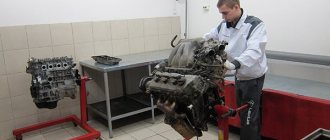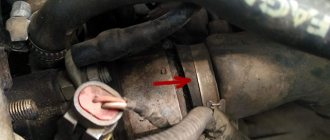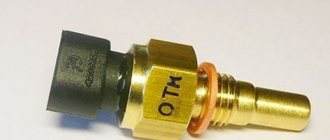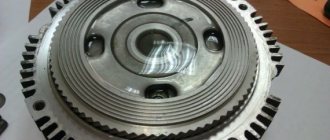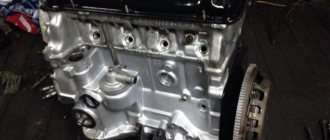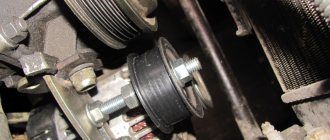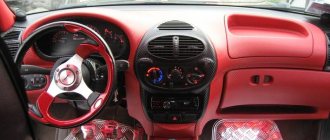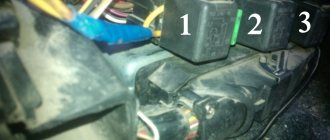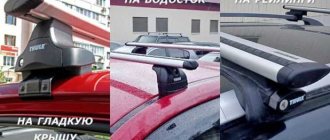Car cooling fan soft start relay
Why is a quick start of a cooling fan unacceptable for a car? Here are some answers:
1. There is a large load on the on-board network (this is wiring, battery, generator); 2. In addition to the previous one, there is also a lot of physical stress on the fan mounts and its bearing; 3. It is necessary to use an unreasonably large fuse, since the inrush current can be up to 30A.
Now let’s decide on the tasks that we will set for ourselves:
1. Our main task is to create, so to speak, a soft start. 2. To do this, use only standard wiring. 3. Limit yourself to existing buttons. 4. Initially, the car did not have a fan relay, so we will fix this.
How does the presented device work? In fact, this is a PWM pulse generator that starts and begins generating constant-frequency pulses to the third output with a time-varying pulse width.
The width time is set by the capacitance of capacitor C3. These pulses follow to the field-effect transistor driver, which controls the load power of the device output. The diode installed at the output serves to suppress unacceptable back emissions from the electric motor.
For the diode, a Schottky diode assembly with a common cathode was used. The P-channel field switch is used because it must regulate the positive voltage. If an N-channel were used, then all the wiring that is associated with engine cooling would need to be reworked, but this is not our task.
In the presented device, some of the elements are mounted, while others are attached to a printed circuit board.
Let's start creating the device. First you need to get the relay, disassemble it and remove all the internals, leaving only the terminals.
It turns out something like this.
Having cut off everything unnecessary, we proceed to the hanging installation.
We will have the entire right side of the circuit as a hinged part, that is, everything that comes out of the 3rd leg of the NE555. If you solder all this on a board, then the size of the board will not be enough at all.
The hanging part is almost finished.
You can proceed to the board itself. I myself had such a situation that I had to trim the board a little so that the transistor and diodes were correctly located outside the board. At the end of the article, the board is shown complete, since I left its modification to the required dimensions for later.
The next step is to solder the cut board into the relay.
The last thing left to do is solder the jumpers and attach the radiator.
That's all. The device is already ready. Now you need to varnish it or try filling it with rosin. The assembled device does not require any settings and it will fit any electric motor, since its maximum current is 74A. The used IRF4905 controller is cheap and easy to find at any electrical supply store.
Here is a view of the ready-to-use device.
Source
Features of "Borey-K"
This is a newer model, it was released in 2021 and has quite big differences from earlier models. However, it must be said that it does not have any great advantages; when choosing a model, you do not need to focus heavily on its novelty; if you need soldered wires, choose Borey-KV.
There are two new inputs - on and off. On the first one you can put a button for forced airflow, on the second - a “ford” button.
In "Borey-K" the programming and connection of external sensors has been significantly changed. In particular, it can work in the following configurations:
1. With a standard temperature sensor, this was the only option for earlier Borey models.
2. With an autonomous temperature sensor, for earlier Borey models, for this it was necessary to install a jumper on the board and only in the Borey-KV1 model.
3. Cascade, the slave unit repeats all the actions of the master.
4. With two sensors, one on the internal combustion engine, the second can be installed in another place and can be either a temperature or pressure sensor. A typical application is a temperature sensor in the engine compartment; in traffic jams, the fan will be triggered not only by the temperature of the internal combustion engine, but also by overheating of the air under the hood.
Below are the corresponding connection diagrams.
"Borey-K" is supplied by default programmed for the scheme (the first) with a standard temperature sensor of the first type, this is the most widespread use case for "Borey". With this connection scheme, the user will not need to understand in detail the programming of the Borey; it is enough to simply connect the unit correctly in parallel with the standard system, and it will be configured automatically. Or, in the absence of a standard system, you need to bring a magnet (press the magnetic button) at the moment the desired temperature is reached, which Borey will remember.
Appearance of Boreas:
Do-it-yourself soft start of the engine cooling fan
_________________ - Don’t be afraid, only twelve volts... and eight hundred amperes.
| Gudd-Head |
| _________________ [It’s not so much your stupidity as it is my genius] [A correctly asked question contains half the answer] I may not answer for a couple of months, don’t worry. Register and receive two coupons for $5 each: https://jlcpcb.com/cwc | ||
| samsung |
| Gudd-Head |
| _________________ [It’s not so much your stupidity as it is my genius] [A correctly asked question contains half the answer] I may not answer for a couple of months, don’t worry. We invite you on May 20 to a webinar dedicated to the MEAN WELL supply line and its approach to the production of power supplies - as an ecosystem of products and services that allows you to select the optimal power source for any power supply task. Let's consider the entire range of MEAN WELL products in the field of AC/DC, DC/DC and DC/AC converters with a detailed analysis of interesting and unique new products, their applications and much more. | ||
| zzaj |
| Infineon has introduced a new family of protected power switches PROFET™+2 12V. The products combine diagnostic functions and various protections. PROFET™+2 12V switches have one of the lowest on-resistance RDS(ON) in the industry (from 2.6 mOhm) and are available in a miniature TSDSO-14 package with 0.65 mm pin pitch. With ReverseON, the entire family meets stringent reverse polarity protection requirements, implemented for the first time on a single chip. | ||
| [email protected] |
| _________________ The situation gets worse before it gets better. TDA7294 + SMPS 350W + Orbita 35AC-016 = the whole neighborhood is dancing. PRIST expands its range | ||
| thrashes |
| |||||||||||||||||||||||||||||||||||||||||||||||||||||||||||
| |||||||||||||||||||||||||||||||||||||||||||||||||||||||||||
Principle of operation
Thus, the operating temperature of the engine at low speeds and in summer traffic jams actually does not exceed 90-92 o C, with the exception of, of course, abnormal summer heat. For 9 months of operation of the controller (from April to December) and 15,000 km, on my VAZ 2110 1.6 16V (+GBO) the engine never heated up above 95 o C, and accordingly the standard cooling system never worked.

